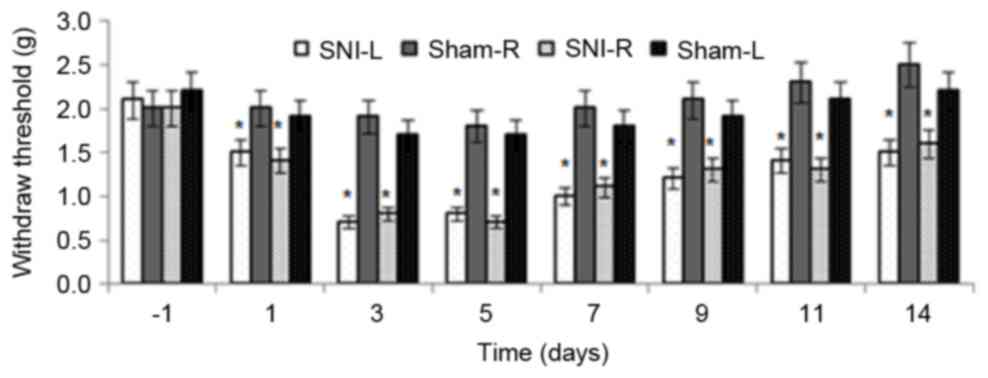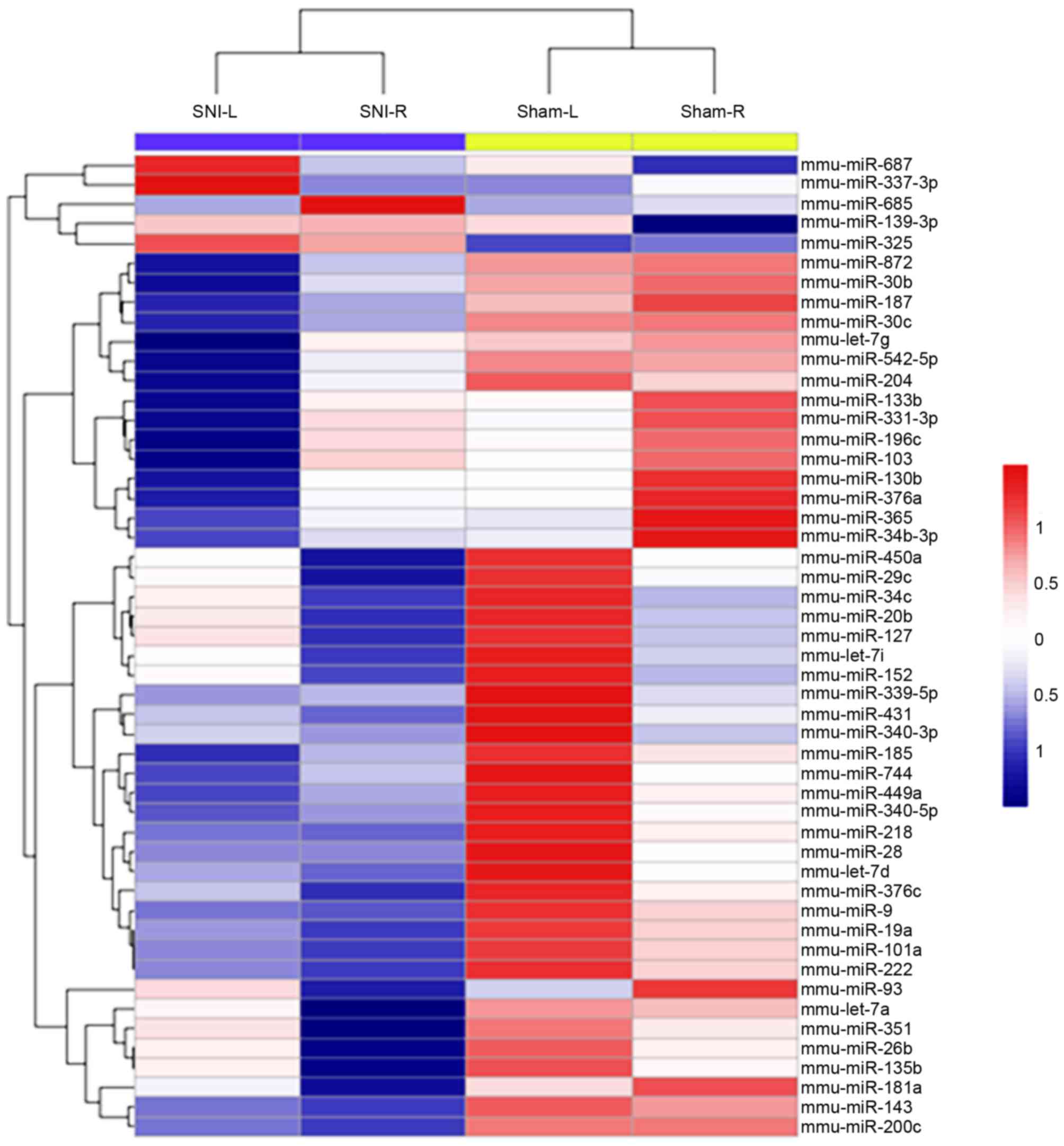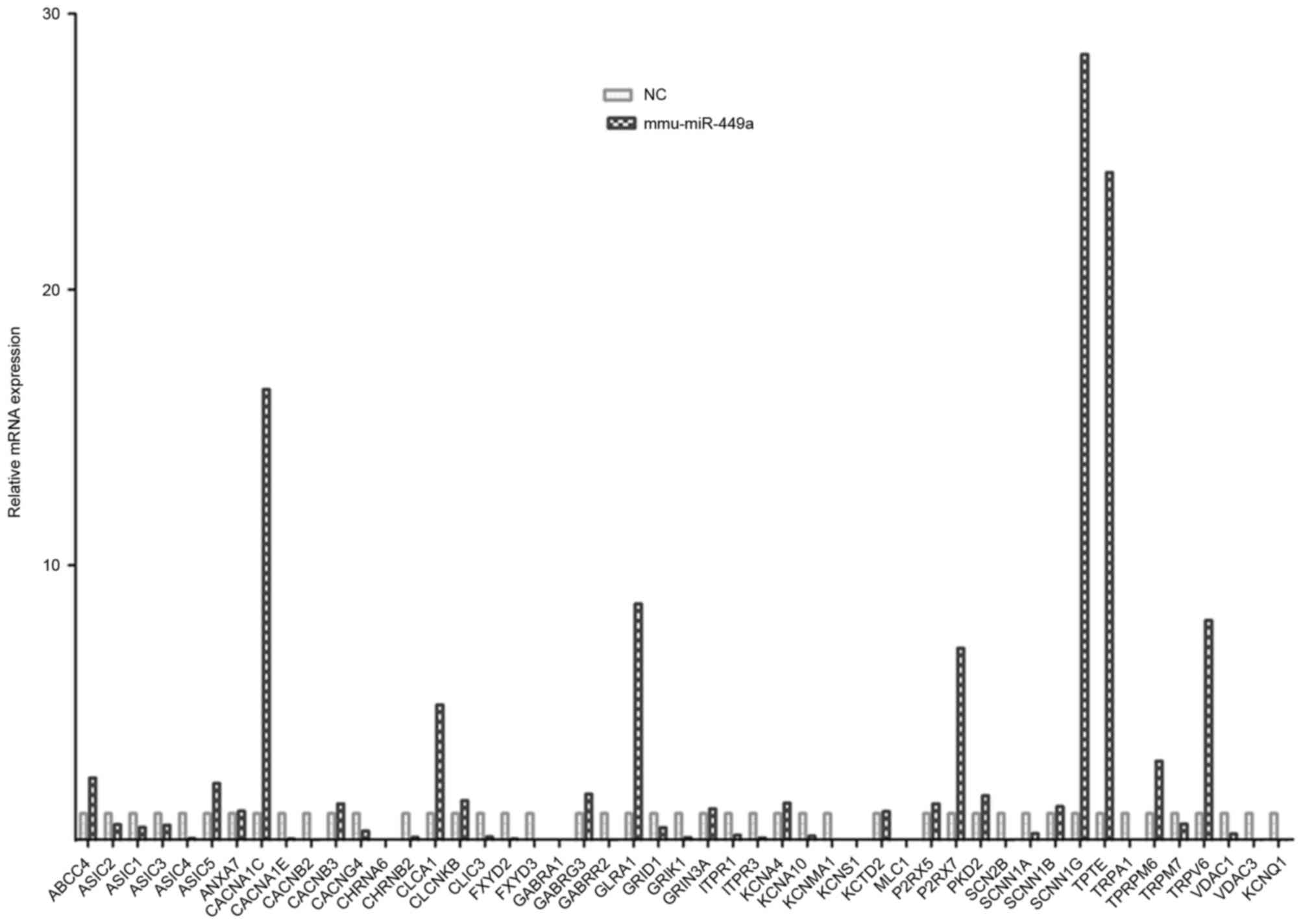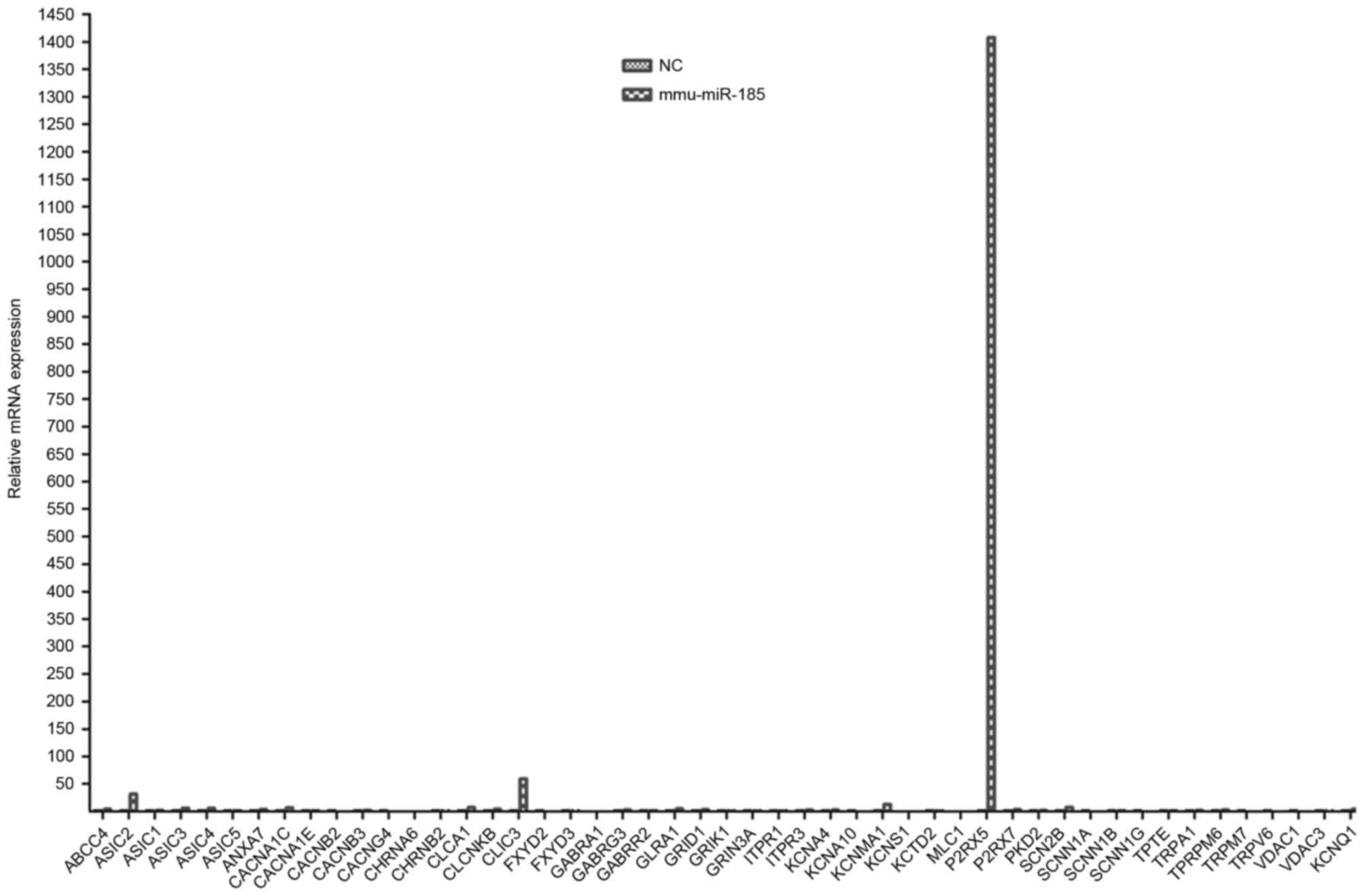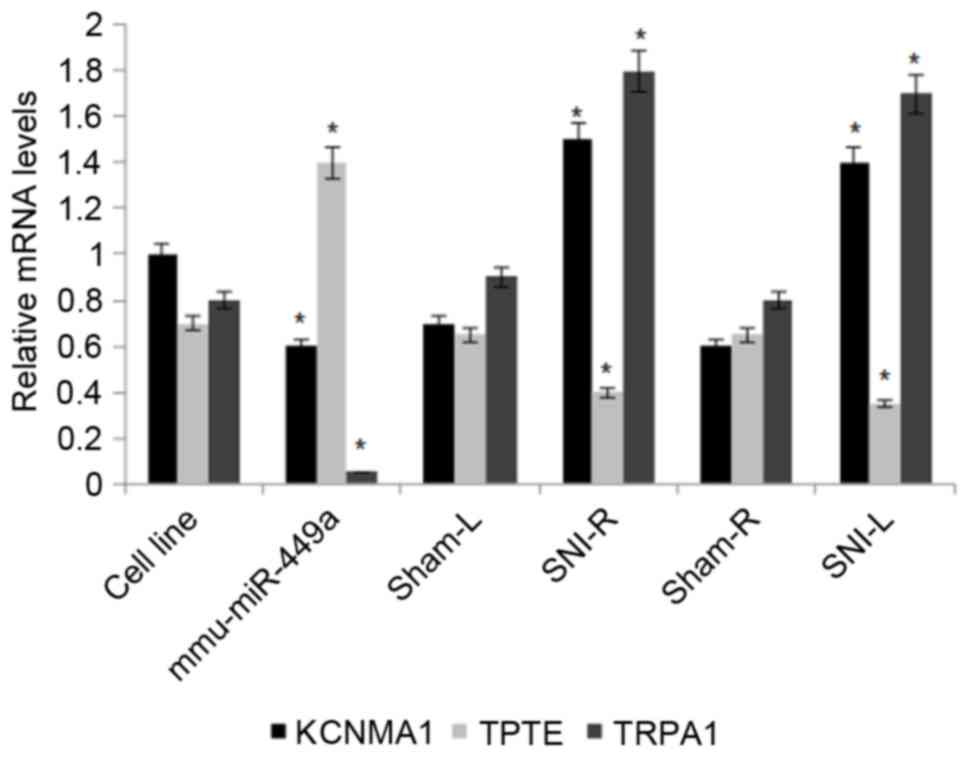|
1
|
Trost Z, Zielke M, Guck A, Nowlin L,
Zakhidov D, France CR and Keefe F: The promise and challenge of
virtual gaming technologies for chronic pain: The case of graded
exposure for low back pain. Pain Manag. 5:197–206. 2015. View Article : Google Scholar : PubMed/NCBI
|
|
2
|
Gerges FJ, Manchanda C, Novak G, Al-Kimawi
M, Semenovski M and Williams S: Occult spinal dysraphism: A
challenge in pain management. Pain Physician. 18:E225–E228.
2015.PubMed/NCBI
|
|
3
|
Rogachov A, Cheng JC and DeSouza DD:
Discriminating neural representations of physical and social pains:
How multivariate statistics challenge the ‘shared representation’
theory of pain. J Neurophysiol. 114:2558–2560. 2015. View Article : Google Scholar : PubMed/NCBI
|
|
4
|
Baquie P, Fooks L, Pope J and Tymms G: The
challenge of managing mid-foot pain. Aust Fam Physician.
44:106–111. 2015.PubMed/NCBI
|
|
5
|
Hayes K and Gordon DB: Delivering quality
pain management: The challenge for nurses. AORN J. 101:328–334;
quiz 335–337. 2015. View Article : Google Scholar : PubMed/NCBI
|
|
6
|
Foster DC, Falsetta ML, Woeller CF,
Pollock SJ, Song K, Bonham A, Haidaris CG, Stodgell CJ, Messing SP,
Iadarola M and Phipps RP: Site-specific mesenchymal control of
inflammatory pain to yeast challenge in vulvodynia-afflicted and
pain-free women. Pain. 156:386–396. 2015. View Article : Google Scholar : PubMed/NCBI
|
|
7
|
Frisch S: Perceptions of pain. Cultural
differences add to the challenge of treating patients' pain. Minn
Med. 97:14–16. 2014.
|
|
8
|
Dale O, Moksnes K and Kaasa S: European
palliative care research collaborative pain guidelines: Opioid
switching to improve analgesia or reduce side effects. A systematic
review. Palliat Med. 25:494–503. 2011. View Article : Google Scholar : PubMed/NCBI
|
|
9
|
Rosenbaum D, Dallongeville J, Sabouret P
and Bruckert E: Discontinuation of statin therapy due to muscular
side effects: A survey in real life. Nutr Metab Cardiovasc Dis.
23:871–875. 2013. View Article : Google Scholar : PubMed/NCBI
|
|
10
|
Caires R, Luis E, Taberner FJ,
Fernandez-Ballester G, Ferrer-Montiel A, Balazs EA, Gomis A,
Belmonte C and de la Peña E: Hyaluronan modulates TRPV1 channel
opening, reducing peripheral nociceptor activity and pain. Nat
Commun. 6:80952015. View Article : Google Scholar : PubMed/NCBI
|
|
11
|
Dib-Hajj SD, Black JA and Waxman SG:
NaV1.9: A sodium channel linked to human pain. Nat Rev Neurosci.
16:511–519. 2015. View
Article : Google Scholar : PubMed/NCBI
|
|
12
|
Cheng CF, Wang WC, Huang CY, Du PH, Yang
JH and Tsaur ML: Coexpression of auxiliary subunits KChIP and DPPL
in potassium channel Kv4-positive nociceptors and pain-modulating
spinal interneurons. J Comp Neurol. 524:846–873. 2015. View Article : Google Scholar : PubMed/NCBI
|
|
13
|
Skerratt SE and West CW: Ion channel
therapeutics for pain. Channels (Austin). 9:344–351. 2015.
View Article : Google Scholar : PubMed/NCBI
|
|
14
|
Sherkheli MA, Schreiner B, Haq R, Werner M
and Hatt H: Borneol inhibits TRPA1, a proinflammatory and noxious
pain-sensing cation channel. Pak J Pharm Sci. 28:1357–1363.
2015.PubMed/NCBI
|
|
15
|
Laedermann CJ, Cachemaille M, Kirschmann
G, Pertin M, Gosselin RD, Chang I, Albesa M, Towne C, Schneider BL,
Kellenberger S, et al: Dysregulation of voltage-gated sodium
channels by ubiquitin ligase NEDD4-2 in neuropathic pain. J Clin
Invest. 123:3002–3013. 2013. View
Article : Google Scholar : PubMed/NCBI
|
|
16
|
Sakai A and Suzuki H: microRNA and Pain.
Adv Exp Med Biol. 888:17–39. 2015. View Article : Google Scholar : PubMed/NCBI
|
|
17
|
Linnstaedt SD, Walker MG, Parker JS, Yeh
E, Sons RL, Zimny E, Lewandowski C, Hendry PL, Damiron K, Pearson
C, et al: MicroRNA circulating in the early aftermath of motor
vehicle collision predict persistent pain development and suggest a
role for microRNA in sex-specific pain differences. Mol Pain.
11:662015. View Article : Google Scholar : PubMed/NCBI
|
|
18
|
Mallik S and Maulik U: MiRNA-TF-gene
network analysis through ranking of biomolecules for
multi-informative uterine leiomyoma dataset. J Biomed Inform.
57:308–319. 2015. View Article : Google Scholar : PubMed/NCBI
|
|
19
|
Galicia-Vázquez G, Chu J and Pelletier J:
eIF4AII is dispensable for miRNA-mediated gene silencing. RNA.
21:1826–1833. 2015. View Article : Google Scholar : PubMed/NCBI
|
|
20
|
Ding M, Li J, Yu Y, Liu H, Yan Z, Wang J
and Qian Q: Integrated analysis of miRNA, gene and pathway
regulatory networks in hepatic cancer stem cells. J Transl Med.
13:2592015. View Article : Google Scholar : PubMed/NCBI
|
|
21
|
Yan L, Lee S, Lazzaro DR, Aranda J, Grant
MB and Chaqour B: Single and Compound Knockouts of MicroRNA
(miRNA)-155 and its Angiogenic Gene Target CCN1 in Mice Alter
Vascular and Neovascular Growth in the Retina via Resident
Microglia. J Biol Chem. 290:23264–23581. 2015. View Article : Google Scholar : PubMed/NCBI
|
|
22
|
van Spronsen M, van Battum EY, Kuijpers M,
Vangoor VR, Rietman ML, Pothof J, Gumy LF, van Ijcken WF, Akhmanova
A, Pasterkamp RJ and Hoogenraad CC: Developmental and
activity-dependent miRNA expression profiling in primary
hippocampal neuron cultures. PLoS One. 8:e749072013. View Article : Google Scholar : PubMed/NCBI
|
|
23
|
Zhang Y, Ueno Y, Liu XS, Buller B, Wang X,
Chopp M and Zhang ZG: The microRNA-17-92 cluster enhances axonal
outgrowth in embryonic cortical neurons. J Neurosci. 33:6885–6894.
2013. View Article : Google Scholar : PubMed/NCBI
|
|
24
|
Impey S, Davare M, Lesiak A, Fortin D,
Ando H, Varlamova O, Obrietan K, Soderling TR, Goodman RH and
Wayman GA: An activity-induced microRNA controls dendritic spine
formation by regulating Rac1-PAK signaling. Mol Cell Neurosci.
43:146–156. 2010. View Article : Google Scholar : PubMed/NCBI
|
|
25
|
Kusuda R, Cadetti F, Ravanelli MI, Sousa
TA, Zanon S, De Lucca FL and Lucas G: Differential expression of
microRNAs in mouse pain models. Mol Pain. 7:172011. View Article : Google Scholar : PubMed/NCBI
|
|
26
|
Wang W, Shi Q, Mattes WB, Mendrick DL and
Yang X: Translating extracellular microRNA into clinical biomarkers
for drug-induced toxicity: From high-throughput profiling to
validation. Biomark Med. 9:1177–1188. 2015. View Article : Google Scholar : PubMed/NCBI
|
|
27
|
Asha S, Sreekumar S and Soniya EV:
Unravelling the complexity of microRNA-mediated gene regulation in
black pepper (Piper nigrum L.) using high-throughput small RNA
profiling. Plant Cell Rep. 35:53–63. 2016. View Article : Google Scholar : PubMed/NCBI
|
|
28
|
Richner M, Bjerrum OJ, Nykjaer A and
Vaegter CB: The spared nerve injury (SNI) model of induced
mechanical allodynia in mice. J Vis Exp pii. 30922011.
|
|
29
|
Scroggs RS, Todorovic SM, Anderson EG and
Fox AP: Variation in IH, IIR and ILEAK between acutely isolated
adult rat dorsal root ganglion neurons of different size. J
Neurophysiol. 71:271–279. 1994.PubMed/NCBI
|
|
30
|
Zima V, Witschas K, Hynkova A, Zimová L,
Barvík I and Vlachova V: Structural modeling and patch-clamp
analysis of pain-related mutation TRPA1-N855S reveal inter-subunit
salt bridges stabilizing the channel open state. Neuropharmacology.
93:294–307. 2015. View Article : Google Scholar : PubMed/NCBI
|
|
31
|
Kanthesh BM, Sandle GI and Rajendran VM:
Enhanced K(+) secretion in dextran sulfate-induced colitis reflects
upregulation of large conductance apical K(+) channels (BK;
Kcnma1). Am J Physiol Cell Physiol. 305:C972–C980. 2013. View Article : Google Scholar : PubMed/NCBI
|
|
32
|
Tsantoulas C: Emerging potassium channel
targets for the treatment of pain. Curr Opin Support Palliat Care.
9:147–154. 2015. View Article : Google Scholar : PubMed/NCBI
|
|
33
|
Pereira V, Busserolles J, Christin M,
Devilliers M, Poupon L, Legha W, Alloui A, Aissouni Y, Bourinet E,
Lesage F, et al: Role of the TREK2 potassium channel in cold and
warm thermosensation and in pain perception. Pain. 155:2534–2544.
2014. View Article : Google Scholar : PubMed/NCBI
|
|
34
|
Livak KJ and Schmittgen TD: Analysis of
gene expression data using real-time quantitative PCR and the
2(−Delta Delta C(T)) method. Methods. 25:402–408. 2001. View Article : Google Scholar : PubMed/NCBI
|
|
35
|
Abramowski P, Ogrodowczyk C, Martin R and
Pongs O: A truncation variant of the cation channel P2RX5 is
upregulated during T cell activation. PLoS One. 9:e1046922014.
View Article : Google Scholar : PubMed/NCBI
|
|
36
|
Zhao Z, Ma X, Sung D, Li M, Kosti A, Lin
G, Chen Y, Pertsemlidis A, Hsiao TH and Du L: microRNA-449a
functions as a tumor suppressor in neuroblastoma through inducing
cell differentiation and cell cycle arrest. RNA Biol. 12:538–554.
2015. View Article : Google Scholar : PubMed/NCBI
|
|
37
|
Lai CY, Yu SL, Hsieh MH, Chen CH, Chen HY,
Wen CC, Huang YH, Hsiao PC, Hsiao CK, Liu CM, et al: MicroRNA
expression aberration as potential peripheral blood biomarkers for
schizophrenia. PLoS One. 6:e216352011. View Article : Google Scholar : PubMed/NCBI
|
|
38
|
Nassini R, Materazzi S, Benemei S and
Geppetti P: The TRPA1 channel in inflammatory and neuropathic pain
and migraine. Rev Physiol Biochem Pharmacol. 167:1–43. 2014.
View Article : Google Scholar : PubMed/NCBI
|
|
39
|
Kogure W, Wang S, Tanaka K, Hao Y,
Yamamoto S, Nishiyama N, Noguchi K and Dai Y: Elevated H2 O2 levels
in trinitrobenzene sulfate-induced colitis rats contributes to
visceral hyperalgesia through interaction with the ransient
receptor potential ankyrin 1 cation channel. J Gastroenterol
Hepatol. 31:1147–1453. 2016. View Article : Google Scholar : PubMed/NCBI
|
|
40
|
DeBerry JJ, Saloman JL, Dragoo BK, Albers
KM and Davis BM: Artemin immunotherapy is effective in preventing
and reversing cystitis-induced bladder hyperalgesia via TRPA1
regulation. J Pain. 16:628–636. 2015. View Article : Google Scholar : PubMed/NCBI
|
|
41
|
Langford DJ, Paul SM, West CM, Dunn LB,
Levine JD, Kober KM, Dodd MJ, Miaskowski C and Aouizerat BE:
Variations in potassium channel genes are associated with distinct
trajectories of persistent breast pain after breast cancer surgery.
Pain. 156:371–380. 2015. View Article : Google Scholar : PubMed/NCBI
|



